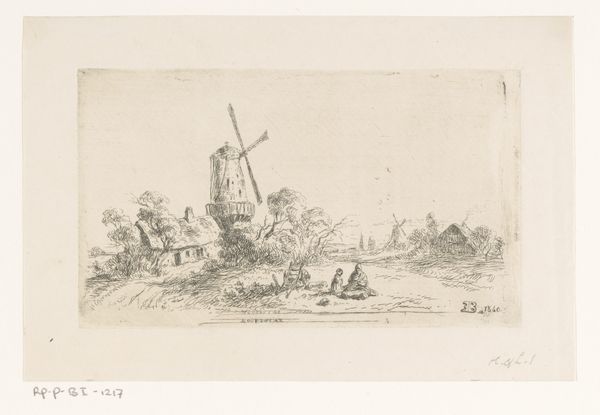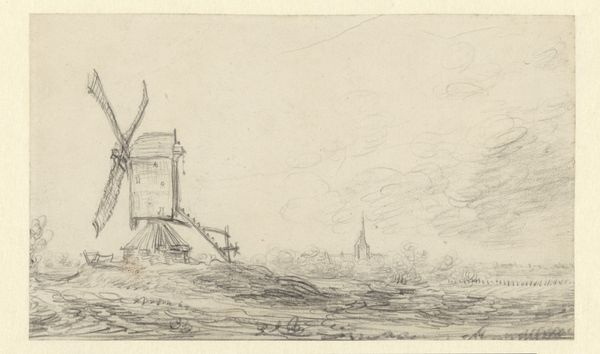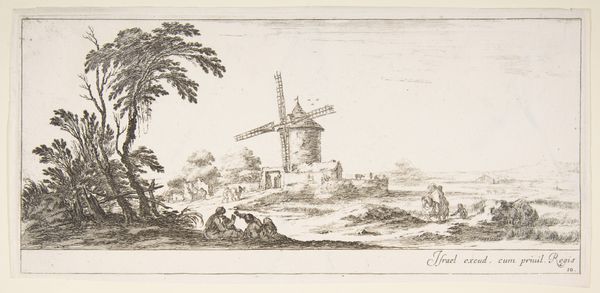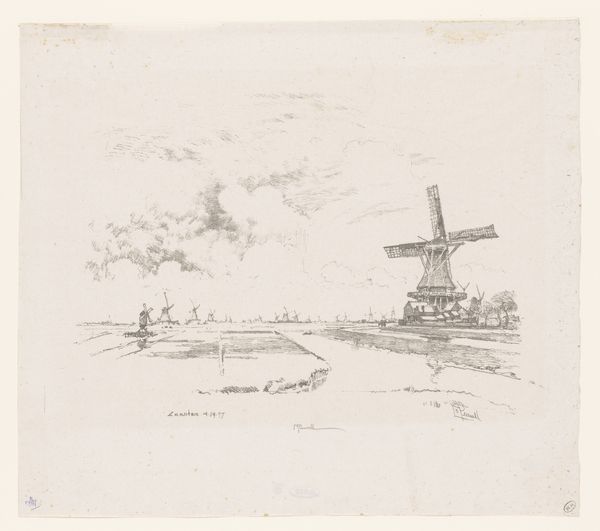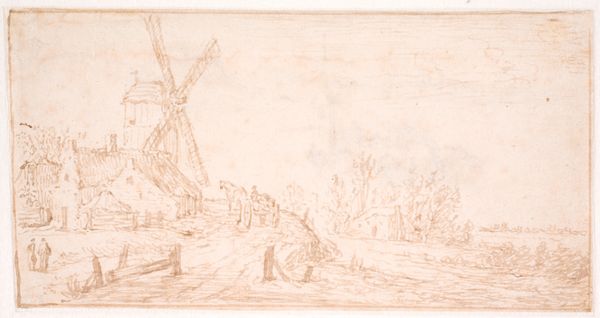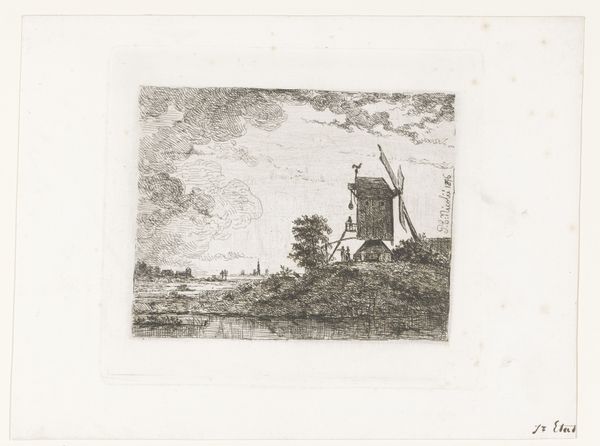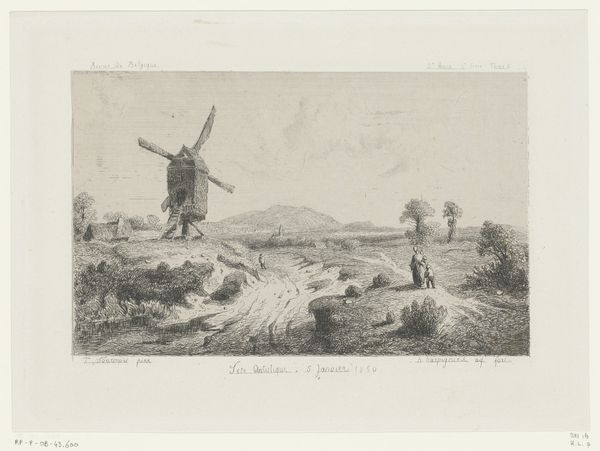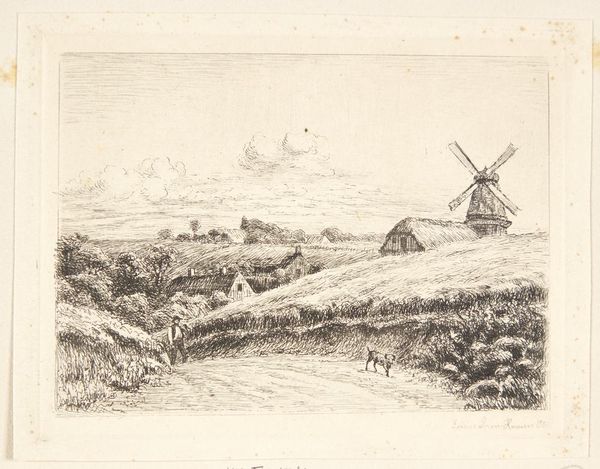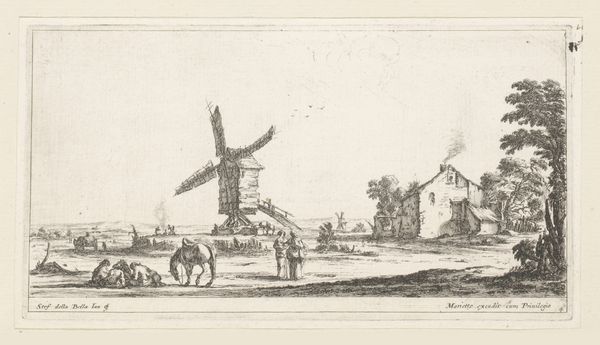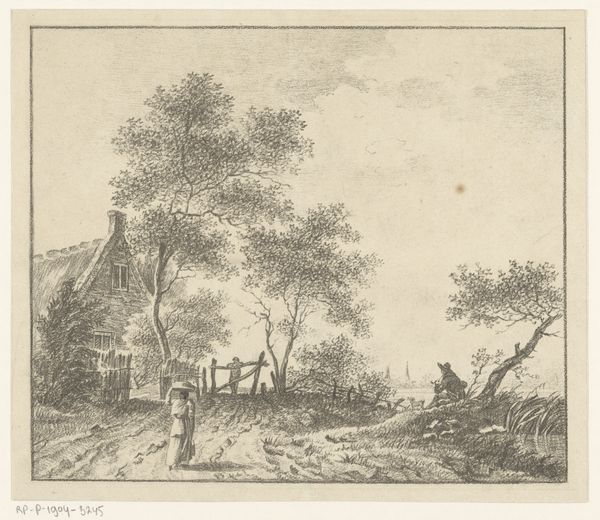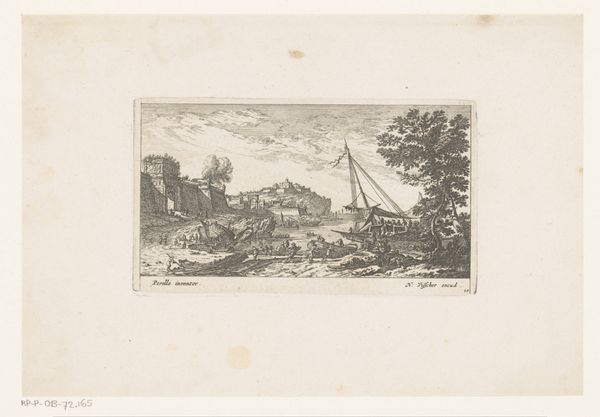
Dimensions: height 110 mm, width 164 mm
Copyright: Rijks Museum: Open Domain
Curator: Immediately, it’s incredibly gentle and melancholic. Like a memory fading at the edges. Editor: I see that too. Carl Friedrich Holtzmann created this etching, *Landschap met een molen*, or *Landscape with a Mill*, in 1774. He employed printmaking techniques that, for me, highlight the industrialized mode of artistic production emerging at this time. Curator: An etching—the thought of acid eating away at the metal… It gives the soft lines an underlying sense of impermanence. Like the scene itself is slowly dissolving. Did they use windmills a lot in art back then? Editor: Yes, windmills appear often. In the Netherlands, especially, mills had become symbols of both national pride and, of course, economic power tied to land management and grain processing. We can look closely at the details of Holtzmann’s printing to consider his specific class position in relation to that symbol, too. Curator: The more I look, the more narrative I imagine. Someone strolling off in the distance... Is that a small carriage making its way up the hill? It’s Romantic, yet not dramatic; domestic, not epic. It reminds me of something… quiet determination. Editor: A good observation. We can look at how Holtzmann carefully layered his etching lines, which gave him control over values and the creation of this mood and texture. This etching is evidence of skilled artisanal labor transformed into capitalist relations of exchange in the 1700s. Curator: Thinking about that…makes me think about what windmills themselves powered – that daily grind, the transformation of grain to bread to sustenance… Editor: Absolutely. It ties material production to artistic expression. Curator: All that considered, it seems to hum quietly to life once more! Thank you for that consideration.
Comments
No comments
Be the first to comment and join the conversation on the ultimate creative platform.
